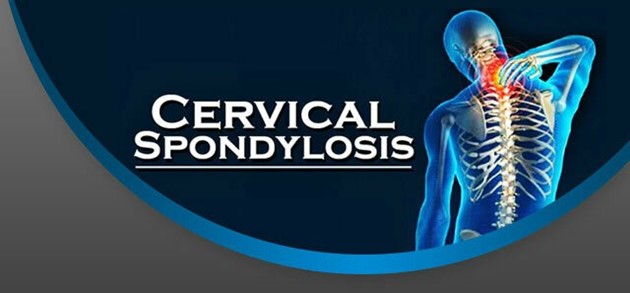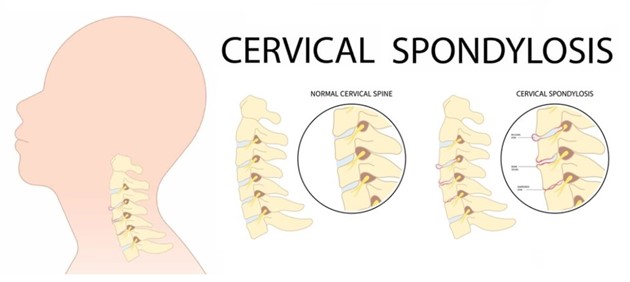Be Aware of the Warning Signals from your Brain and Cervical Spine: Cervical Spondylosis

Our human nervous system is a very complex network of nerve cells composed of the brain, spine, and millions of neurons, neurogliocyte and nerve fibers throughout the body. Headache, dizziness, numbness and weakness of limbs, and unsteady walking are common symptoms of central nervous system diseases of the brain or spine. These symptoms can be caused by diseases originating from the brain or spine and shall not be neglected.
Introduction of the Human Nervous System
With the advancement of medical technology today, neurosurgeons can no longer adopting the old way of “treating the head for headaches and treating the feet for foot pain”, based solely on the patient’s superficial symptoms. As the clinical symptoms of brain or spinal diseases are sometimes very strange and complicated, relying solely on clinical symptoms and neurological reflex examination to achieve accurate diagnosis is obsolete and even insufficient. However, neurosurgeons will base on their past clinical experience to evaluate the cause of the patient’s disease, and also with the precise Magnetic Resonance Imaging (MRI) to see through the nerve structure in the patient’s body in order to make an accurate diagnosis, and then to evaluate the most suitable treatment for the patient.
The human nervous system can be divided into two categories: the Central Nervous System (CNS) and the Peripheral Nervous System (PNS). These two nervous systems are connected by complex nerve fibers, so that the human body can produce appropriate instinctive reactions and have the ability to think, remember, and change emotions.
Central Nervous System (CNS)
It consists of two parts: the brain and the spinal cord. The former includes the cerebrum, brainstem and cerebellum, while the latter includes the spine and the Central Nervous System, consists of 7 cervical vertebrae, 12 thoracic vertebrae, 5 lumbar vertebrae, and 5 sacral vertebrae, the central nerve spinal cord contained in the middle position of the vertebra, and the central spinal nerve roots of each segment.
Peripheral Nervous System (PNS)
It can be divided into two parts:
- the Somatic Nervous System (SNS); and
- the Autonomic Nervous System (ANS).
The Somatic Nervous System includes our sensory and motor nervous systems. Sensory nerves include vision, hearing, smell, taste and touch, etc., which transmit information from inside the human body or from the external environment to the sensory neurons of the brain. The Motor Nervous System is responsible for transmitting autonomic nerve information instructions from the brain to the muscles of the limbs and bones, allowing us to flexibly use our motor and limb movements to walk or work.
The Autonomic Nervous System includes sympathetic and parasympathetic nerves. Its main function is to control the beating speed of the human heart, the secretion of the gastrointestinal tract and other internal organs, and smooth muscle peristalsis, as well as coordinate the control of hormones and endocrine hormones in the human body.

Brain Diseases: Stroke, Brain Lesions and Brain Tumors
The Relationship between Headache, Dizziness, Syncope and Stroke
Not all people who are at high risk of stroke are suffering from high cholesterol, high blood sugar, and high blood pressure. Most stroke patients are like normal people before the stroke, without any symptoms or long-term disease history. However, their bodies may have hidden congenital or acquired cerebrovascular or cervical vascular lesions. Once these hidden bombs in the brain are detonated, it can cause stroke.
Cervical Spondylosis (Peoples with Bowing Head Habits)
Cervical Spondylosis refers to the disease caused by cervical disc degeneration, strain or injury, which are what are generally known as “Peoples with bowing head habits”. The lesion causes the space of nerve canal or intervertebral neural foramen in the center of the cervical spine to become narrow, compressing or irritating the central nervous system, spinal cord, nerve roots or sympathetic nerves in the neck, causing symptoms of nerve compression.
As we age, if our cervical spine has long-term incorrect posture, it will all lead to excessive load on the cervical spine and accelerate strain. Incorrect posture includes the following:
- working with our head down;
- looking at mobile phones, or raising our head excessively;
- sleeping on our side, sitting or lying on our stomach;
- the pillow is too high or too low, and the position of the pillow contacting the back of the neck is not appropriate;
- long-term arm or shoulder weight bearing; or
- constant sports injuries, etc.

Cervical Spondylosis can be generally divided into five types of symptoms:
- Symptoms at Head and Neck
Due to instability of the cervical spine, patients may experience headaches, neck pain, neck or shoulder muscle stiffness, and limited neck movement.
- Symptoms at Nerve Root
Patients may feel numbness and weakness in their arms and nerve pain in their back and shoulders.
- Symptoms at Spinal Cord
Unsteady steps when standing or walking, numbness and weakness in the hands and legs, or even muscle atrophy.
- Symptoms at Vertebral Artery Vascular
Patients often experience dizziness, headache, and tinnitus.
- Symptoms at Sympathetic
Due to cervical spondylosis, compression on the sympathetic nerves in the patient’s neck may induce some strange symptoms, and patients are sometimes misdiagnosed as having panic disorder, mental illness, or heart disease. Due to misdiagnosis and not being understood by family and friends, the patient becomes even more emotionally distressed. Strange symptoms include dizziness, headache, stomach acid, gas, stomach pain, blurred vision, sensitivity to light, nasal congestion, foreign body in the throat and difficulty swallowing. Some people may experience palpitations, nausea, chest tightness, and insomnia. Some patients may occasionally experience vagus nerve attacks, and fainting, resulting in temporary loss of consciousness. The aforementioned sympathetic symptoms are especially common in female patients, and the symptoms are also more obvious.



